
Hi, friends! At work, we are reading lots of manuscripts after an open submission period. That’s got me thinking about some of the common issues plaguing romance manuscripts.
I often get emails asking, “Why is my novel getting rejected?” I want to help, because I’m a writer myself. But sometimes a combination of reasons led to the rejection, and unfortunately, when I’m at work, I don’t have enough time to respond to everyone.
Sometimes, we pass on a manuscript because the writing style itself is rough. There’s lots of telling and no showing, head-hopping, and so on. Style issues can be fixed! Writing style can be improved through practice, reading books and blogs about writing, working with knowledgeable critique partners, and reading plenty of good books and paying attention to how other authors do it.
However, we pass on well-written stories all the time. Why? Sometimes it just doesn’t fit our submission guidelines. If it’s not the length we publish, for example, or it’s not a genre we acquire, of course it’s going to be a no.
Even if it fits our submission guidelines and it’s a good story, sometimes it gets a pass. That may be because we’ve already published a couple of stories like it, or something too similar is in development.
But often, we pass because of issues with the story, and some issues come up again and again. Here are four of them…and they can also be fixed!
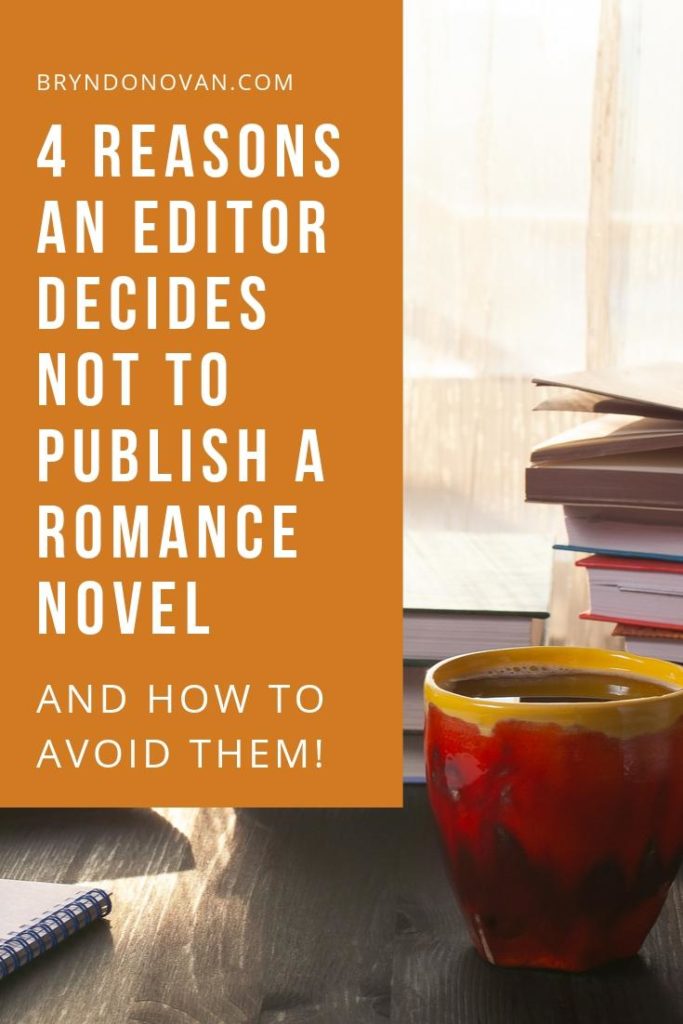
1. The book begins with several pages of information about the main character’s past.

Maybe we see the main character pour herself a cup of coffee or drive home from work, but this leads into several pages about where she grew up, how she wound up in this town, her past failed relationship, and so on.
This is called “info dumping,” and it’s a common rookie mistake. Almost all of us have done it!
a solution
Begin with a scene, full of action and dialogue, in which the main character faces conflict or an obstacle. That gets the readers hooked. Then weave some of the backstory in there.
It doesn’t have to be life-or-death. Here’s an example.
Let’s say your main character is a real estate agent, and in the first scene, she’s hosting an open house. She’s chattering about what a great property it is. As she does this, she reflects that even if she failed as an actress, she still uses her acting skills—the place is a dump. No prospective buyers are interested; they eat her cookies and leave. One of them even says the cookies are no good. As she drives back to her own apartment in Los Angeles, she thinks about how she’d be able to afford a house herself if she still lived in Michigan where she grew up.
See how that works? We’ve learned a lot about her past, but because we’ve seen her in action, it’s a lot more interesting to read then pages of exposition. And because she’s got relatable struggles, we want to stick with her.
[spacer height=”20px”]
2. There’s no spark between the two main characters.
 I see sentences like this all the time in synopses (but I’m totally making this example up): “After the death of his wife three years ago, Jared focuses on his career as a circus clown. When Megan, a beautiful trapeze artist, joins the circus, he tells himself he can’t get involved.”
I see sentences like this all the time in synopses (but I’m totally making this example up): “After the death of his wife three years ago, Jared focuses on his career as a circus clown. When Megan, a beautiful trapeze artist, joins the circus, he tells himself he can’t get involved.”
Well, Jared, nobody asked you to get involved. And surely Megan isn’t the first attractive woman you’ve seen in three years?
An attraction based only on looks is shallow by definition, and it can be boring or even depressing for readers.
a solution
The best thing you can do in a romance is figure out why your two main characters are perfect for one another.
Let’s say Jared’s too serious—a sad clown, really—and Megan makes him laugh and lighten up. Or maybe Megan is always chasing impractical dreams, and Jared helps ground her a little.
You can show things like this in early scenes, and your readers will love it. And if Megan’s nerves feel fluttery, or Jared’s heart warms—congratulations! You’re showing the spark between them.
[spacer height=”20px”]
3. There’s not a strong conflict or obstacle.
 Here’s a kind of plot I see a lot: the main characters are shy about dating because they’ve been in bad relationships, but they do lots of fun things together and fall in love. Then the mean ex-boyfriend or ex-girlfriend rolls into town to complicate matters. Maybe there’s a misunderstanding, and one of the main characters wrongly believes the other is back with their ex. Instead of asking, they’re heartbroken and run away.
Here’s a kind of plot I see a lot: the main characters are shy about dating because they’ve been in bad relationships, but they do lots of fun things together and fall in love. Then the mean ex-boyfriend or ex-girlfriend rolls into town to complicate matters. Maybe there’s a misunderstanding, and one of the main characters wrongly believes the other is back with their ex. Instead of asking, they’re heartbroken and run away.
There’s not a lot of tension throughout this kind of story, and the obstacle that shows up at the end hasn’t been an issue before then, so it’s doesn’t feel as compelling as it could. Besides, readers often get frustrated when characters don’t resolve a misunderstanding through a normal adult conversation.
a solution
Just as you need to know why your main characters belong together, you also need to know what obstacles are keeping them apart.
It’s often much more satisfying if the obstacles have to do with their goals, personalities, or choices, instead of or in addition to some external force. Why? Because then both characters have arcs. They need to change or grow to get to their happy ever after.
If you want ideas for romantic conflicts, you can find a bunch of them here!
[spacer height=”20px”]
4. The main characters don’t have a good reason to be around one another.
 In general, for two people to fall for one another, they usually have to spend a lot of time together. (There are exceptions, of course!)
In general, for two people to fall for one another, they usually have to spend a lot of time together. (There are exceptions, of course!)
In many romance manuscripts, the main characters aren’t actually interacting that much, which is a problem. They keep thinking about one another, but it’s not enough.
I also read manuscripts in which they keep bumping into each other at random. That can be fun when it happens two or three times, but you can’t keep it up for the whole story.
A good example of this is the Hallmark movie Christmas in Evergreen: Letters to Santa. The main characters bump into each other a few times and laugh about the coincidence. It doesn’t strain credulity, because they’re in a small town. Soon, though, they embark upon a project together—fixing up an old store—and that gives the story forward momentum.
a solution
Find a reason for your characters to be together a lot. (If they’re in close quarters—stuck on a submarine or a spaceship together, for instance—this is a romance trope called “forced proximity.”) Bake it right into the plot.
The example in #2, where the characters are both in the circus, is actually doing this well. Or let’s look at #1, with the real estate agent. What if our hero is a guy who wants to sell his outdated house, fast, and hires her to help him? That might give them lots of reasons to be together.
Getting published isn’t all about talent. It’s also a combination of hard work and luck. Most writers get a slew of rejections before getting published…and they often get more even after having their first book published.
Publishing is very subjective. Sometimes, a story just doesn’t connect with me, whereas it might connect with another editor. For that reason, you should never take one rejection as a vote for it being a bad story…and you should definitely never take it as a vote that you’re a bad writer.
I’ve incorporated a lot of what I’ve learned in my day job as an executive editor in my book Blank Page to Final Draft. It’s a step-by-step guide to plotting, writing, and editing a novel. You might want to check it out!
[spacer height=”20px”]
[spacer height=”20px”]
Have you run into other problems as you’ve learned how to write a romance novel—or any kind of novel? Let us know in the comments! Thanks for reading, and happy writing!

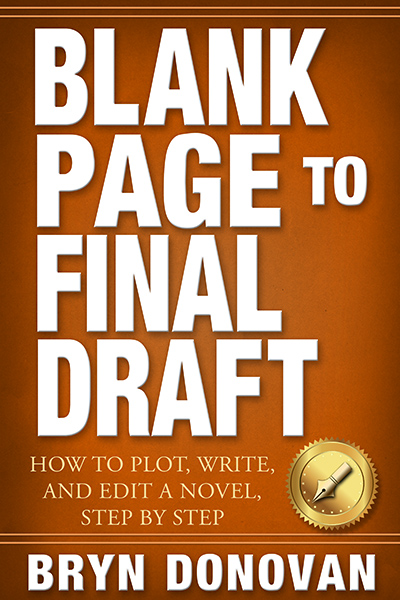




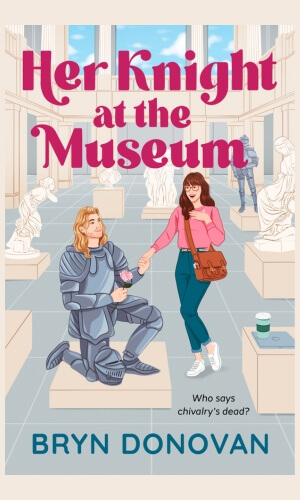

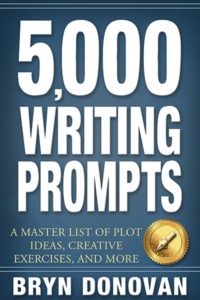
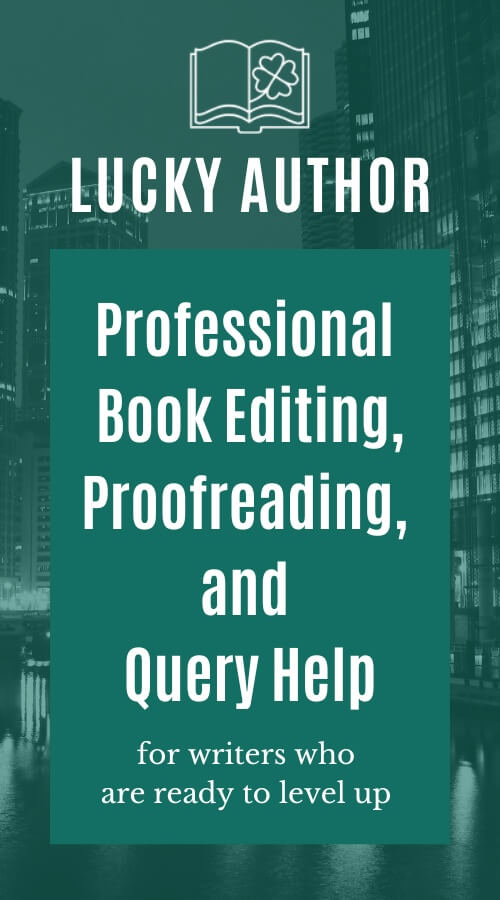
I was so discouraged by all the rejections, that I published my book on Inkitt and now I have over 100 4-5 star reviews! It’s been the most gratifying thing to have those reviews greet me in my inbox…like it wasn’t all for nothing <3
Hi, Sue! That is so fantastic. Congratulations!
As usual, your simple, honest, easy to understand write-by-numbers approach shows us writers a clear path to help improve and fix problems. Thank you, Bryn
Aww thanks, Bryan. You are too kind, as always! Hope you’re having a good week. 🙂
I’m humbly taking notes. Thank you for this Bryn!
You’re welcome, Katrina! Happy writing 🙂
Thanks so much for the wonderful pointers. My WIP is not a romance, but it has romantic elements. I really needed your comments about being together because my hero and heroine are thrown into two different worlds. They each have essential roles to play in defeating the villain but they are not together and they cannot communicate. I was having a hard time keeping connection between the two people until they can be reunited in the end. So thanks for the info. I’ll have a great project to work on at my writer’s retreat. My ride will be here soon.
Hi, Jessie! Ah, that is a challenge! You’re so good, though…I bet you’ll figure it out. The writer’s retreat sounds fun! I want to do that someday!
This info is very timely and as actionable as usual–thank you! You asked about “problems”. When I receive a rejection. I immediately enroll in another course and buy more books about the craft of writing, as well as those from the genre in which I’m writing. My biggest problem now is not enough hours in the day to fit in all the reading, writing, and studying iaround my JOB. Oh well, I guess that’s a problem many of us have.
Leslie, you are such a boss. That’s awesome—I’m so glad you commented. YES, I really struggle with writing time, too!
Excellent advice. Evan after publishing 40 or so books, I still see myself guilty of a few things. Now to edit my new manuscript! Thank you!
Patrice! Well no one’s more of an expert than you are, for sure. 🙂 Thanks for commenting! Have fun editing!
Great suggestions, Bryn. Hallmark has a very seasoned formula for their stories and the more info you give to writers on this, the better for your open submission process for all involved. Thank you! Veronica
Veronica, thanks for commenting! And I think these carry over to other kinds of romance, too. It seems like they’d be easy to write until you try, ha ha…at least, that’s my experience! 🙂
Bryn, I have been wondering about how the Hallmark movie “formula” compares to what you look for in novel submissions. In the movies the conflict between the main characters is typically light – a quickly resolved misunderstanding or mistaken assumption for example. The story is rarely about the main characters trying to overcome a conflict that threatens the success of their relationship. Often they are working together to solve an external challenge and in the course of doing so they fall in love. Do you like novels that read like a Hallmark movie or are you looking for stories that adhere to the more traditional sweet romance structure?
Hi, Suzanne! Personally for novel submissions, I’m looking for stories that would be great Hallmark movies. We do like characters working on an issue together—simply because it forces them to interact all the time. 🙂 However, both the hero and the heroine usually have a conflict to the romance. I agree that we try to keep the overall tone very light on Hallmark Channel, but in publishing we’re open to somewhat more poignant tones as we look forward to original content on the Hallmark Drama channel. I really dislike a simple misunderstanding as the final crisis point. Hope that helps!
Hi Bryn. I enjoyed this post. Some great examples here! I struggled a bit with the romance part of my book, maybe because it wasn’t the main focus of my book (a ghost story) and could have used this info back then. But, will refer to it moving forward. Thanks!
This is so helpful. Thank you so much. I am so going to double check my manuscript for these.
I enjoyed this post. Helpful without “info dumping” too much to hold attention. Just like we need to do in our manuscripts.
If I was writing a romance where the characters repeatedly bump into each other, there would be a hidden reason. The most obvious would be stalking or manipulation. The arc goes from romance to thriller, as the protagonist starts to question all the coincidences. At least, that’s how my mind works. I like to write genre-bending stories with lots of plot twists.
Hi Bryn, Thank you for your post. I was wondering if it was considered info dumping to describe the fictional world I’ve created ( from the POV of the protagonist) in the first couple of pages.